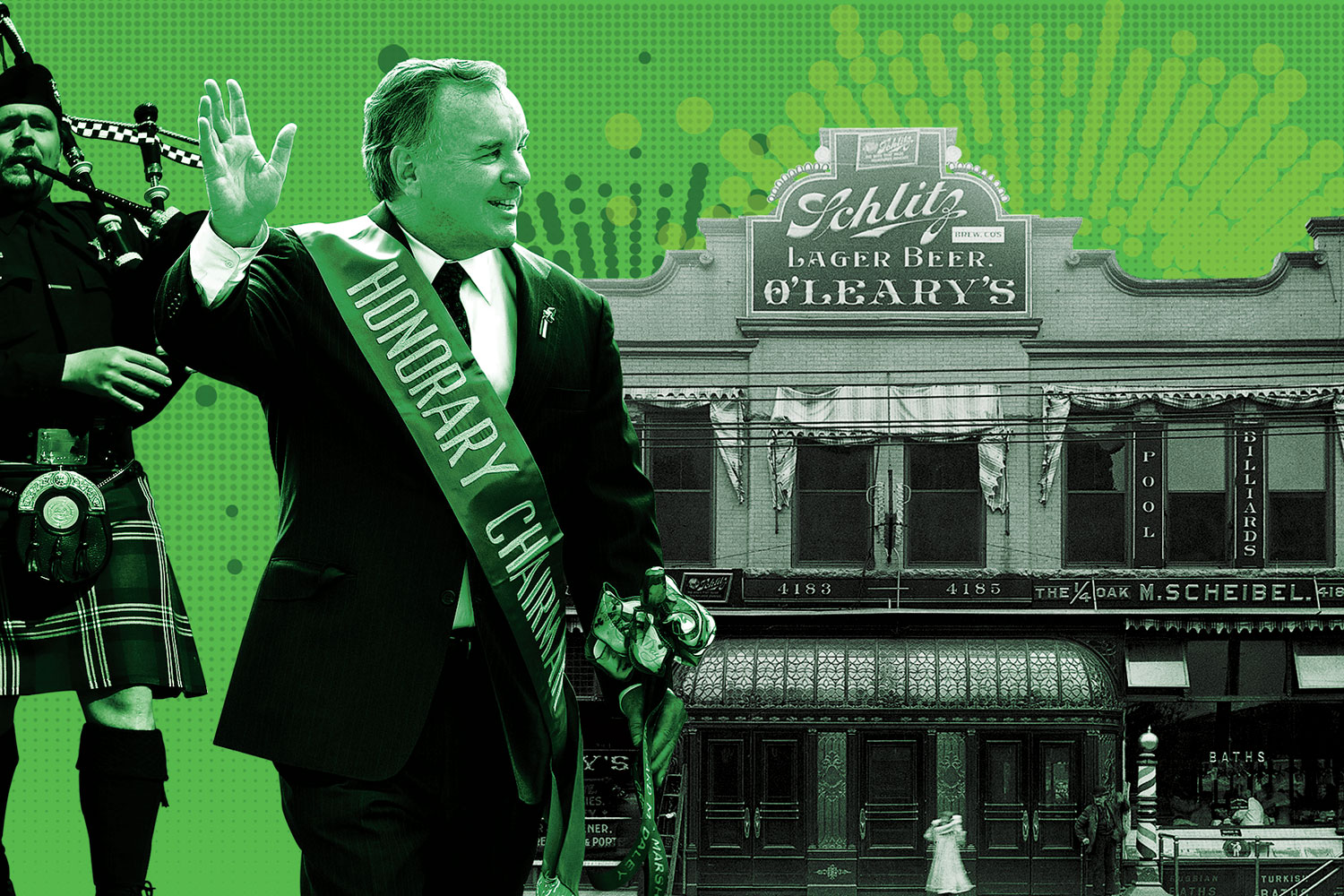Special-edition emerald Blackhawks jerseys. Adult men cosplaying as leprechauns. Sticky-floored pubs at 9 a.m. It’s St. Patrick’s Day — like it or not, Chicago’s best excuse for a party. And just another sign of the outsize Irish Catholic influence on this city. How’d we get here? Let’s review.
Early Days
You’ve heard of the Irish Potato Famine of the mid-1800s? To recap: Blighted crops drove more than a million folks out of Ireland, many to America for new opportunities. Irish laborers are credited with transforming Chicago from a rinky-dink prairie town to a thriving metropolis. Specifically, they helped dig the Illinois and Michigan Canal, connecting Lake Michigan to the Mississippi, and worked the railroads, steel mills, and stockyards. The canal project led many Irish folks to settle in Bridgeport, the eventual home turf of the Daley dynasty. In other words, the Irish went from digging ditches to ghost payrolling in just a century.
Political Rise
While othered in the mid-19th century (the Chicago Tribune blamed immigrants for the city’s crime and poverty — thank goodness that rhetoric stayed in the 1800s!), the Irish speedily rose above their station. According to Sean Farrell, coauthor of The Irish in Illinois, they had three advantages over other newcomers. First, they worked way harder than— Ope, misread my notes, scratch that! First, they were white. Second, they spoke English, allowing them to plug into political goings-on and land jobs in the police and fire departments. Which brings us to No. 3: They came to America with a background in representative democracy and an understanding of bloc voting and coalition building. John Hopkins, elected in 1893, was the first of nine Irish Catholic mayors, with the Irish-led Democratic machine reaching its peak (?) under Richard J. Daley. The 10th will be Bill Murray.
Parishes and Education
The Irish Catholics created churches based on territory, not nationality. From Bridgeport to Rogers Park, each parish served as a foothold: a community center, with clergy acting as spiritual guides, teachers, and social workers. Initially working as domestics, Irish American women played a huge role in education, staffing parish, public, and nursing schools. My father especially would like you to know that Chicago’s two major Catholic universities — Loyola and DePaul — stem from neighborhood parishes.
Pubs
Irish taverns cropped up around the canal, steel mills, and stockyards as places for men (and the occasional woman, through the back door and, per my Irish Chicago lesbian fan fiction, sporting pantaloons and an impish grin) to socialize and organize. Today, you can barely walk a block from Edison Park to Mount Greenwood without passing an Irish pub of questionable authenticity. Sláinte.



